Major Project
Improving womens experiences in the gym [Read more]
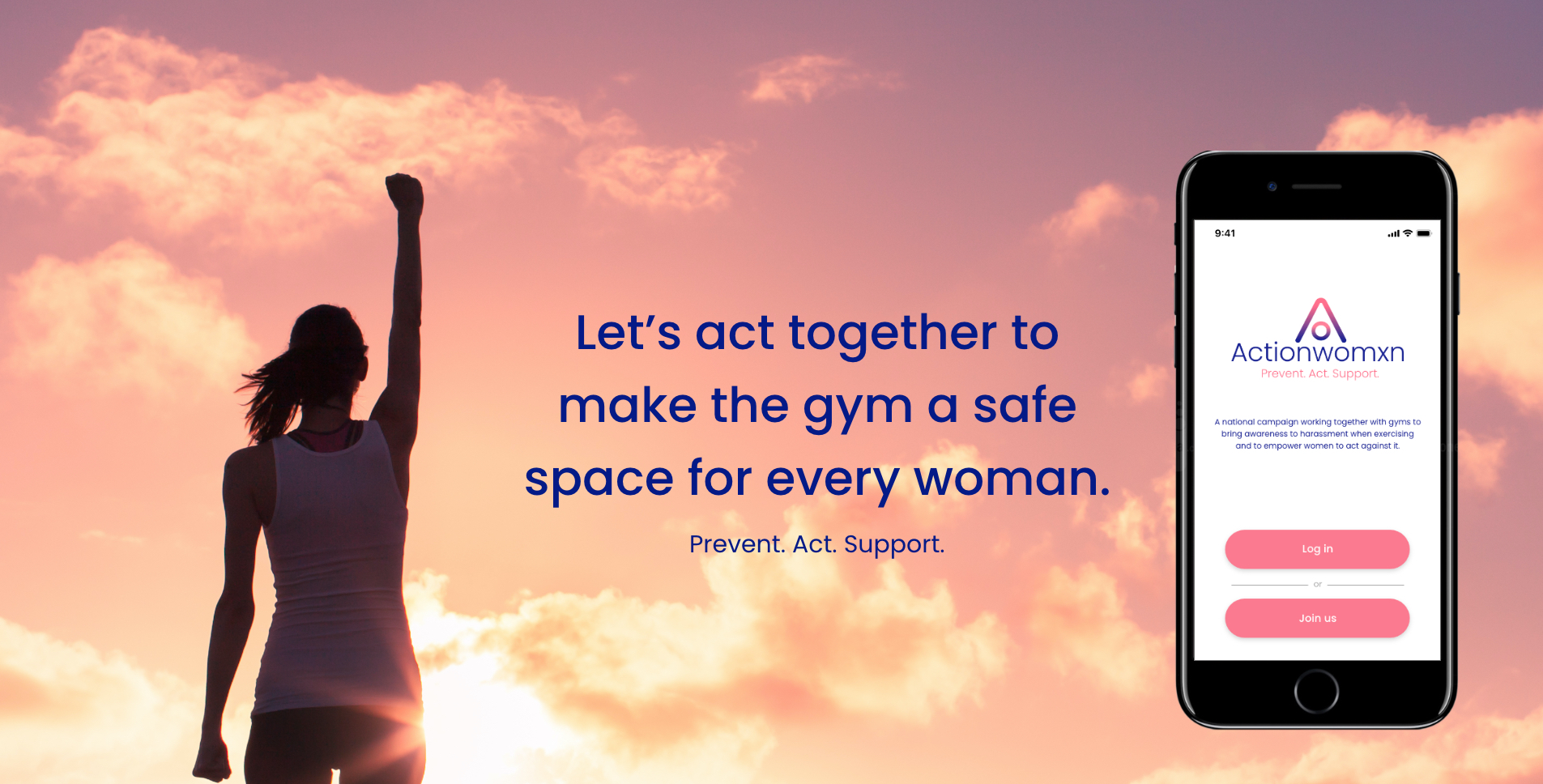
Actionwomxn is a national campaign that works together with gyms to empower women to combat harassment they experience while exercising.
Actionwomxn is an initiative that:
1. Provides protection to women at the gym by allowing them to call for immediate help when they’re being harassed or find themselves in an uncomfortable situation.
2. Creates a supportive community of women that allows them to share experiences, advice and create connections.
3. Offers access to opportunities such as being an ambassador for the campaign or becoming a mentor to others.
4. Assists in the creation of a safe and equal space for women in the gym environment.
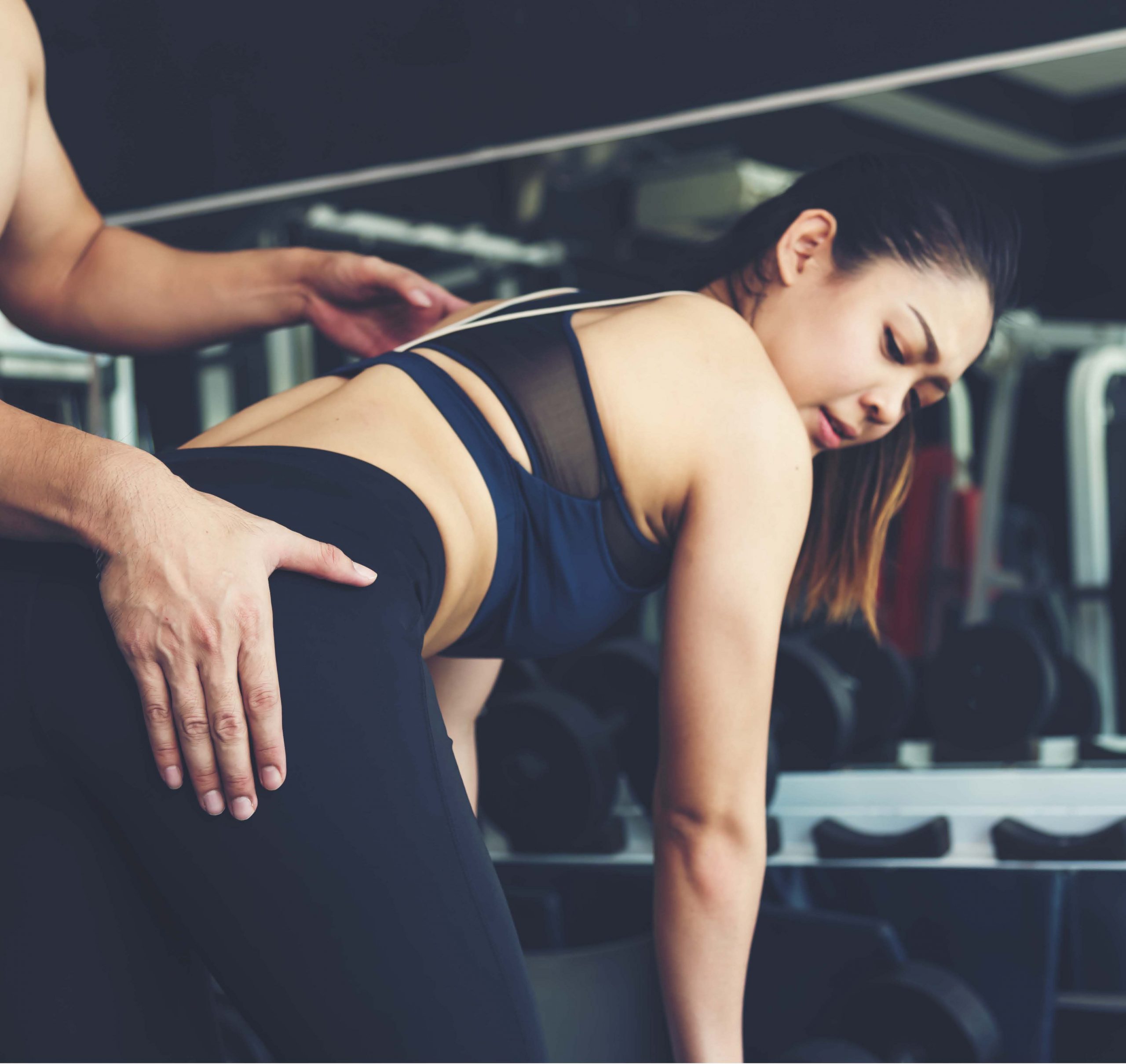
The challenge
Nearly 71% of women have had an interaction or experience in the gym that has left them feeling uncomfortable. These include behaviours such as being watched, flirted with, followed around, and touched, as well as being on the receiving end of comments about their bodies and getting unsolicited advice on how to exercise. The #MeToo movement has shined a light on sexual harassment in our society and the gym has shown to be no exception when it comes to these violations. This project aims to address the need for further protection of women and girls against all forms of discrimination and unfair treatment, so as to achieve Gender Equality, an important pillar that forms part of the United Nations Sustainability Goals. Women should not feel unsafe or violated in a gym setting. It should be an inclusive environment where all members can exercise freely and comfortably without any infringement of their rights.
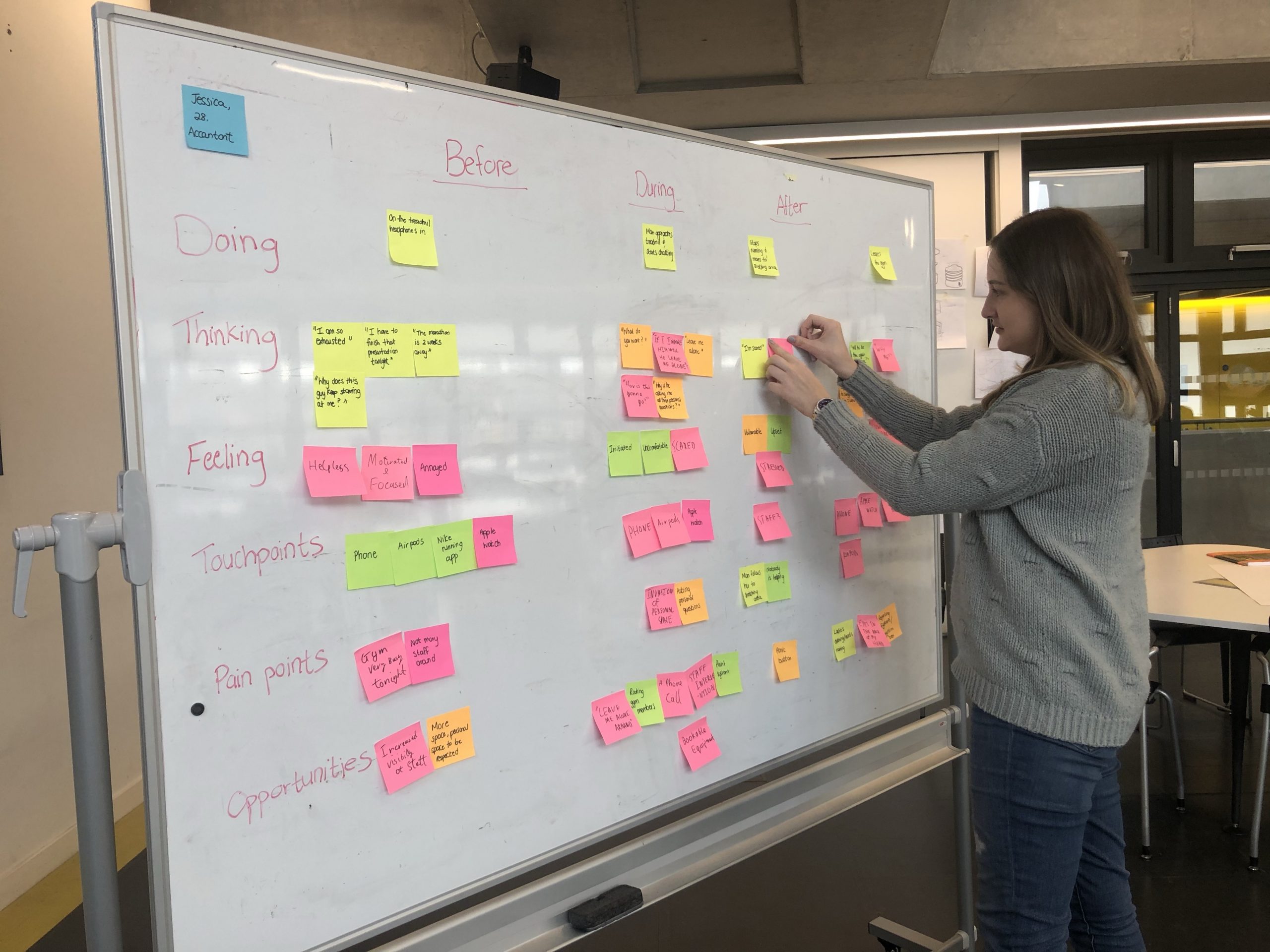
User research
Primary and secondary research was conducted to understand and build empathy around the experiences women have in a gym environment which attribute to them feeling unsafe and uncomfortable, therefore identifying opportunities to change these experiences and create a better environment for women in the gym.
Research methods included: In-depth interviews with six female gym-goers and two gym managers to learn about their experiences, expectations, attitudes and problems. Six 'break-up' letters were written by women to their offenders explaining how the incident left them feeling. Online ethnography was conducted to gain a deeper
insight into people's personal experiences and gain empathy. Bodystorming was used to gain deeper empathy into the experience of female gym-goers and to understand the emotional pain points that come with being pestered by a male gym-goer.
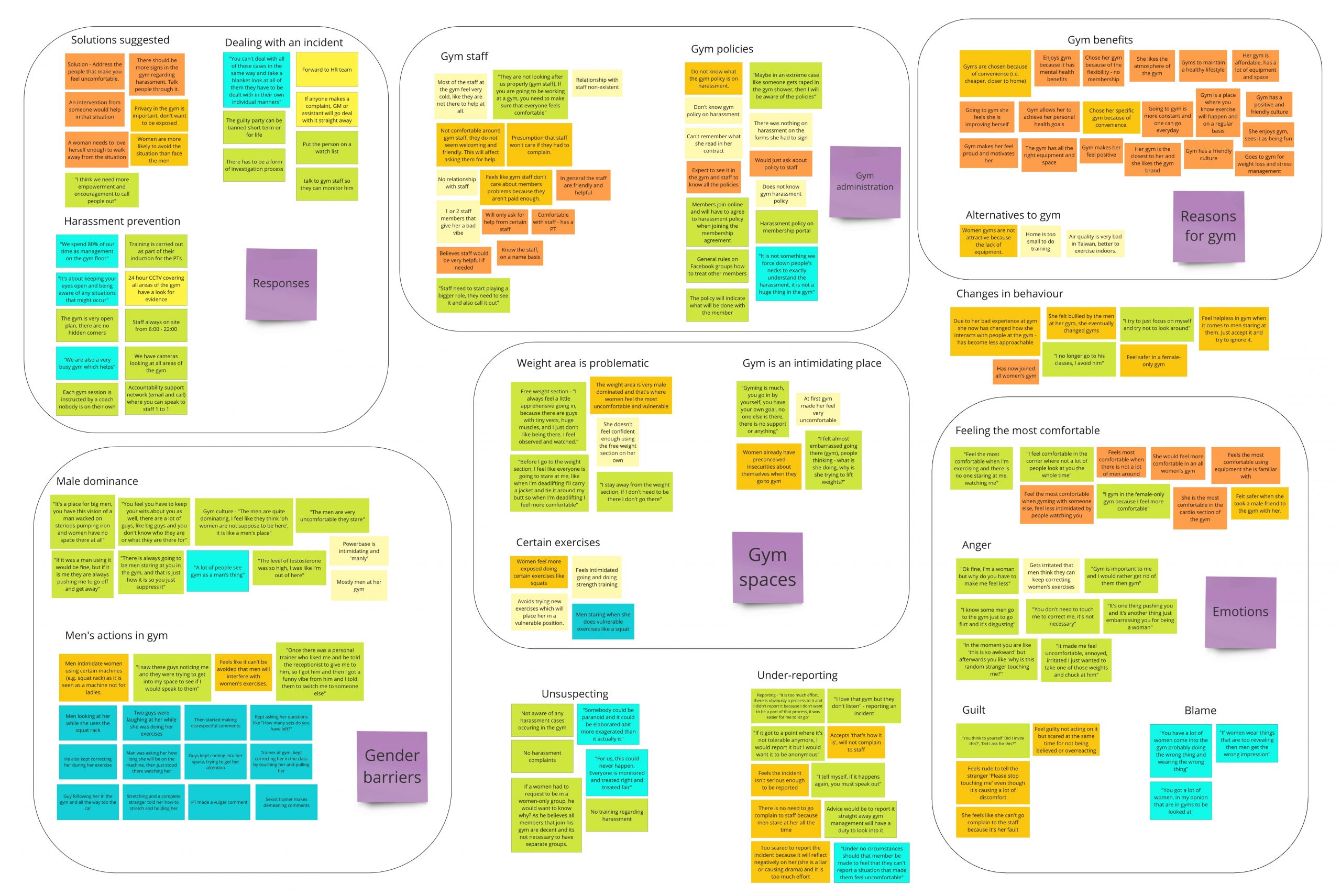
Key insights
Data was collated and analysed using affinity mapping. Key insights included:
1. Women want to report incidents because they feel uncomfortable but they don't know who to speak to, what will be done or whether they will be taken seriously.
2. Women feel uncomfortable in gyms because men intimidate and observe them when exercising.
3. Women want to attend all-female gyms because they perceive it's safer and more comfortable but these gyms are limited.
4. Women feel safer and more comfortable in all women's gyms because there are no men to harass them or judge them on their appearances.
5. Staff need to become more involved in preventing harassment in the gym because women feel isolated and helpless but they appear unconcerned and unapproachable.
6. Women feel isolated and helpless because they are not being acknowledged by the staff as possible vulnerable members.
7. Staff appear unconcerned and unapproachable because there is no trust existing between members and staff.
8. Women avoid particular areas in the gym (e.g. the weights section) because they feel uncomfortable and intimidated in them, but they still wish to access these areas to workout.
9. Women feel uncomfortable and intimidated in specific gym areas because men dominate those areas and make it an unfriendly space for women.
10. Women prefer to perform certain exercises (e.g. squats) in private areas of the gym because they feel observed and vulnerable but they want the freedom to utilise any area of their choice.
11. Women feel observed and vulnerable performing certain exercises because men tend to view these exercises in a sexual manner.
12. Gym managers want to be sure that all members are aware of and abide by harassment policies because this is important to creating an inclusive environment, but they don’t know how to best engage gym members with the issue.
13. Women want an inclusive environment in the gym because they want the gym to be gender-neutral and be protected from those men who harass them.
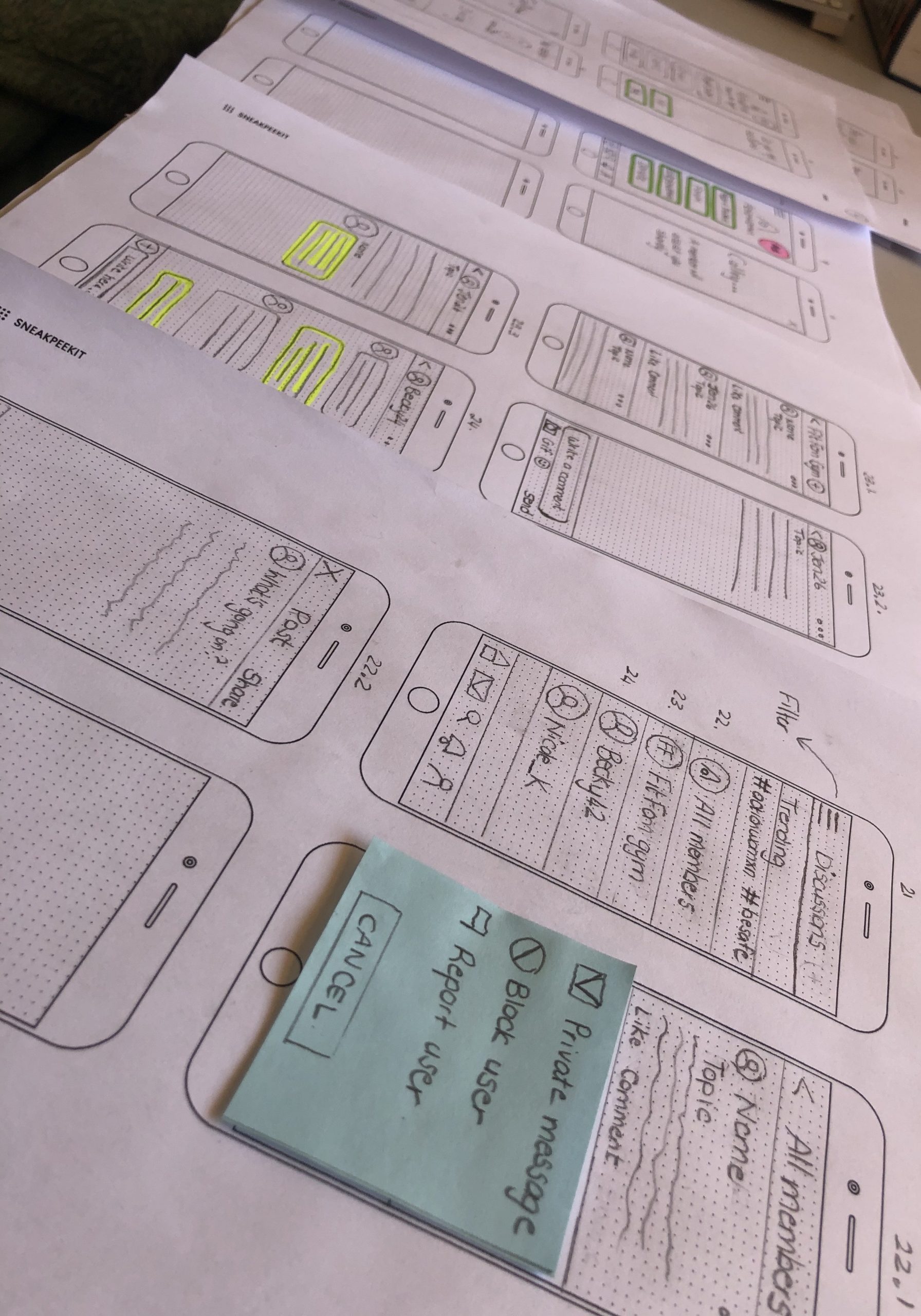
Design iteration
Insights were used to generate 'How Might We' statements which provided the ideal starting point for innovative thinking. These were then placed on a prioritisation matrix to help identify the most important problems. Three rounds of ideation were carried out using the Crazy 8's method. Ideas were then prioritised using the How-now-wow matrix and those that were innovative and could be implemented were taken forward for further exploration with users. Experience prototyping was then conducted with three users where methods included, context scenarios, a co-created prototype, physical model building, bodystorming, role-playing, expert interview and surveys. The app had undergone three rounds of user testing with a total of six users. Qualitative analysis was used to measure the users’ satisfaction and emotional reactions.
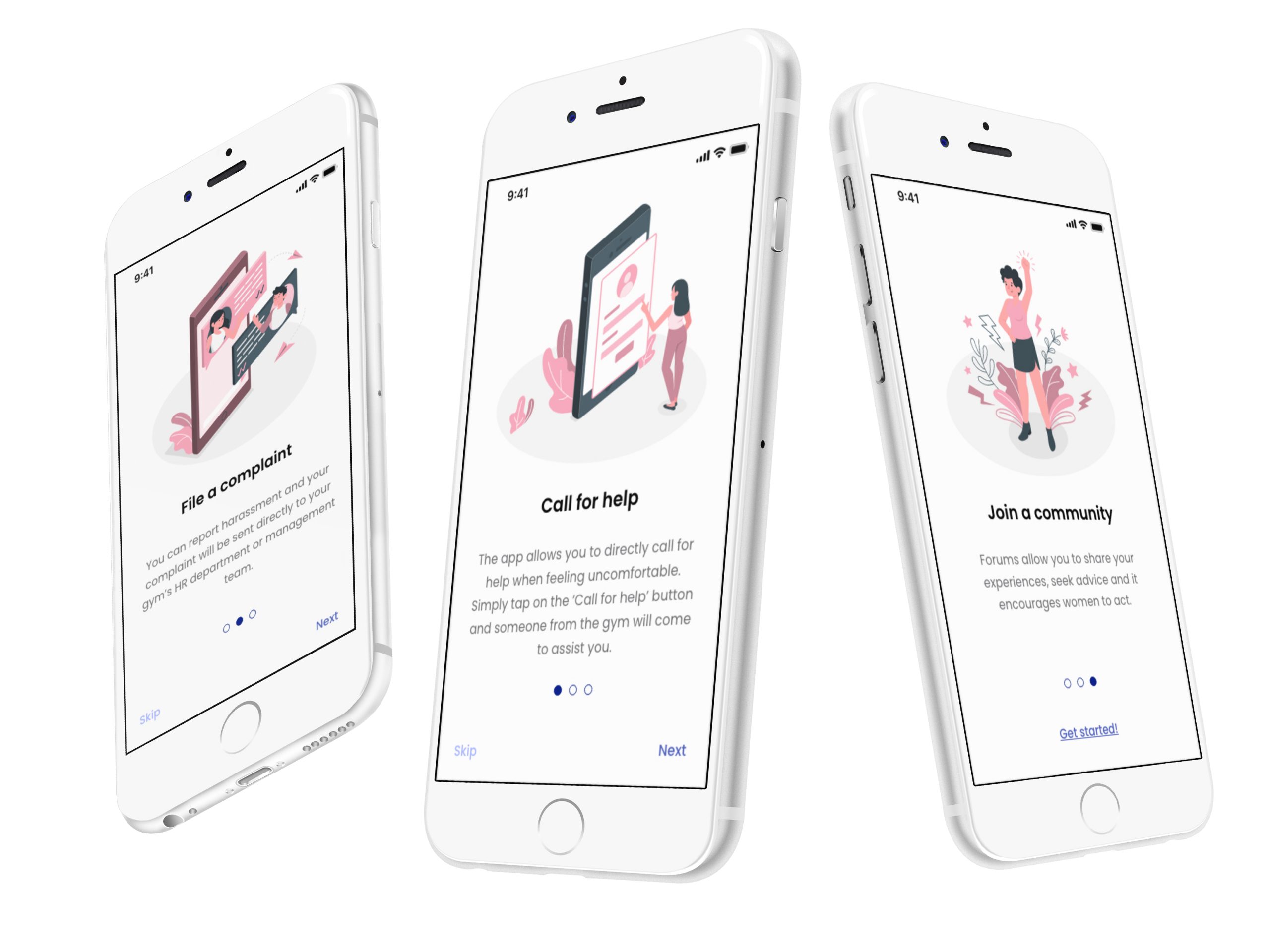
The final concept
The final concept is a campaign called Actionwomxn. An app extends the service offering provided by the campaign. The campaign focuses on making women feel supported, protected and encouraged to take action. It aims to bring awareness to harassment in gyms and to the social and culture gender gap that currently exists in gyms. The app allows female gym-goers to call for help when they’re in an uncomfortable situation at the gym or when they’re being harassed. It allows members to file an official complaint to the gym’s human-resources department or to gym management, and it also acts as a means of general communication between the gym and the female gym member. Other important features include forums, creating events, personal messaging, donating to the movement, shopping and applying for roles.
Angelika Fischer
I see design in the everyday aspects of life and I care especially about aiming to solve problems that people might be facing. I want to make sure every element of an experience works beautifully while still taking into consideration the sustainability of design.
I’m from South Africa and hold a degree in Business Administration and Management from Wits Business School in Johannesburg. Before joining the UXD MA, I was a customer experience designer for a mobile banking app, where I specialised in design research, customer journey maps, personas and user interviews. I’m very passionate about human-centred design, promoting business and design engagement, and being an advocate for the voice of the customer. My strengths include natural curiosity, empathy and being idea-oriented.
The UXD MA degree has made me a more mindful designer – not only when it comes to the user alone, but it has also heightened my awareness about the importance of the user’s environment, cultural background, relationships, community and context in which the product/service will be used.
Design is about more than making beautiful things – it’s about changing the world and how it works. In my future career, I want to be an advocate for change. I want to make designs that contribute towards a more sustainable future.
Major Project
Improving womens experiences in the gym